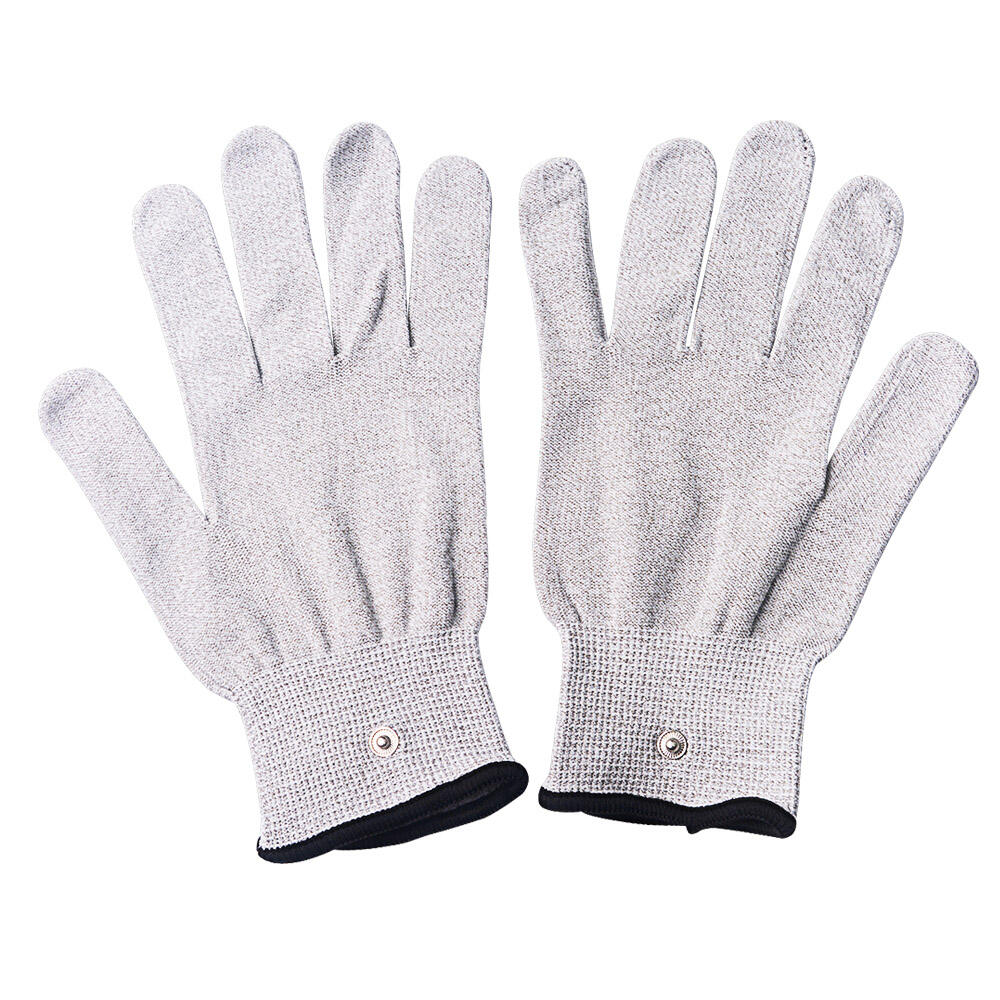In today's technology-driven world, touchscreen devices have become an integral part of our daily lives. From smartphones and tablets to industrial control panels and automotive displays, these interfaces require precise touch interaction that standard gloves simply cannot provide. Conductive gloves have emerged as the perfect solution, allowing users to maintain dexterity and functionality while keeping their hands protected and warm. These specialized hand coverings incorporate conductive fibers or materials that enable seamless interaction with capacitive touchscreens without compromising comfort or performance.
The demand for touchscreen-compatible handwear has skyrocketed across various industries and personal applications. Whether you're working in cold environments, handling delicate electronic components, or simply wanting to use your smartphone outdoors during winter, the right pair of conductive gloves can make all the difference. Modern manufacturing techniques have revolutionized the quality and effectiveness of these products, incorporating advanced materials like silver-infused fibers, copper threading, and specialized conductive coatings that maintain sensitivity while providing durability and comfort.
Understanding Conductive Technology in Gloves
How Conductive Materials Work
Conductive gloves function through the integration of electrically conductive materials that allow the transfer of electrical charge from your fingertips to the touchscreen surface. Capacitive touchscreens detect changes in electrical fields, which is why bare skin contact is typically required for proper functionality. The conductive fibers woven into these gloves create a pathway for electrical conductivity, essentially extending your body's natural electrical field through the glove material.
The most common conductive materials used in high-quality gloves include silver-plated nylon, copper-infused fibers, and specialized conductive polymers. Silver offers excellent conductivity properties while maintaining flexibility and durability, making it a preferred choice for premium products. Copper provides similar benefits at a more economical price point, though it may be slightly less durable over extended use. Advanced polymer coatings represent the newest technology, offering superior conductivity while maintaining the natural feel of traditional fabric materials.
Types of Conductive Fiber Integration
Manufacturing approaches for incorporating conductive elements vary significantly among different glove designs. Full-finger conductivity involves weaving conductive fibers throughout the entire glove construction, providing comprehensive touchscreen compatibility across all fingertips and palm areas. This approach offers maximum versatility but typically comes at a higher cost due to the increased material requirements and complex manufacturing processes.
Fingertip-only conductivity represents a more economical approach, where conductive materials are strategically placed only on the thumb, index, and middle fingertips. This design maintains essential touchscreen functionality while reducing manufacturing costs and preserving the natural feel of traditional glove materials across the majority of the hand surface. Some advanced designs incorporate conductive palm patches for enhanced gesture recognition and multi-touch capabilities.
Top Features to Consider When Selecting Conductive Gloves
Conductivity Performance and Sensitivity
The effectiveness of touchscreen interaction depends heavily on the quality and distribution of conductive materials within the glove construction. High-performance models maintain consistent conductivity even after multiple wash cycles and extended use, while lower-quality alternatives may experience degraded sensitivity over time. Testing conductivity performance involves evaluating response time, accuracy of touch registration, and compatibility with various touchscreen technologies including resistive and capacitive displays.
Professional-grade conductive gloves often undergo rigorous testing protocols to ensure reliable performance across different environmental conditions. Temperature variations, humidity levels, and exposure to various chemicals or cleaning agents can all impact conductivity effectiveness. Premium products incorporate protective coatings and reinforced conductive pathways that maintain consistent performance regardless of external factors, making them ideal for industrial and professional applications.
Durability and Material Construction
Long-term durability represents a critical consideration when investing in quality touchscreen-compatible handwear. The integration of conductive materials can potentially compromise traditional glove durability if not properly engineered and manufactured. High-quality products utilize advanced knitting techniques and reinforced construction methods that protect conductive fibers from mechanical stress and environmental degradation.
Material selection extends beyond conductivity requirements to encompass comfort, breathability, and weather resistance. Modern conductive gloves incorporate moisture-wicking properties, antimicrobial treatments, and ergonomic design features that enhance user comfort during extended wear periods. The base material composition affects flexibility, grip strength, and overall tactile sensitivity, making material selection crucial for specific application requirements.
Industrial and Professional Applications
Electronics Manufacturing and Assembly
Electronics manufacturing environments require specialized hand protection that balances electrostatic discharge prevention with touchscreen compatibility. Conductive gloves designed for these applications incorporate anti-static properties while maintaining the conductivity necessary for operating control panels and diagnostic equipment. The seamless integration of ESD protection and touchscreen functionality eliminates the need for frequent glove changes during complex assembly processes.
Clean room environments present additional challenges where contamination control must be balanced with operational functionality. Advanced conductive gloves designed for semiconductor manufacturing and precision electronics assembly undergo extensive testing for particle generation, chemical compatibility, and static dissipation properties. These specialized products often incorporate multiple layers of protection while maintaining the thin profile necessary for detailed manual work.
Automotive and Transportation Industries
Modern vehicles increasingly rely on touchscreen interfaces for navigation, climate control, and entertainment systems. Professional drivers, mechanics, and automotive technicians require gloves that enable interaction with these systems while providing protection from automotive fluids, temperature extremes, and mechanical hazards. Heavy-duty conductive gloves designed for automotive applications incorporate reinforced palms, chemical-resistant coatings, and enhanced grip surfaces.
Fleet management and logistics operations benefit significantly from touchscreen-compatible gloves that enable efficient use of handheld devices, GPS systems, and digital documentation tools. The ability to operate electronic devices without removing protective handwear improves productivity while maintaining safety standards in challenging work environments. Weather-resistant models provide year-round functionality for outdoor operations and cold storage facilities.
Consumer Applications and Everyday Use
Winter Sports and Outdoor Activities
Outdoor enthusiasts and winter sports participants face the challenge of staying connected while maintaining hand warmth and dexterity. Conductive gloves designed for recreational use prioritize thermal insulation while incorporating touchscreen compatibility for smartphones, GPS devices, and action cameras. Waterproof and windproof variants provide comprehensive weather protection without sacrificing electronic device functionality.
Layering systems have become increasingly popular among serious outdoor enthusiasts, combining thin conductive liner gloves with heavier outer shells for maximum versatility. This approach allows users to maintain fine motor control for device operation while providing the option to add additional insulation when needed. Modern designs incorporate quick-dry materials and antimicrobial treatments that maintain hygiene during multi-day outdoor adventures.
Urban Commuting and Daily Technology Use
Daily commuters and urban professionals require gloves that seamlessly integrate with their technology-dependent lifestyles. Lightweight conductive gloves offer the perfect balance of style, comfort, and functionality for navigating smartphones, tablets, and public transportation payment systems. Fashion-forward designs incorporate business-appropriate aesthetics while maintaining full touchscreen compatibility across all fingertips.
The rise of contactless payment systems and digital ticketing has made touchscreen-compatible gloves essential accessories for modern urban living. Premium consumer models feature refined construction techniques that provide a natural feel while maintaining reliable conductivity for precise touch input. Breathable materials and moisture management systems ensure comfort during active commuting and temperature transitions between indoor and outdoor environments.
Maintenance and Care Guidelines
Proper Washing and Storage Techniques
Maintaining the conductivity and overall performance of specialized handwear requires adherence to specific care protocols. The delicate nature of conductive fibers necessitates gentle washing techniques that preserve the integrity of electrical pathways while removing accumulated dirt, oils, and contaminants. Most quality products can withstand machine washing using cold water and mild detergents, though air drying is typically recommended to prevent heat damage to synthetic materials.
Storage considerations play an important role in extending product lifespan and maintaining consistent performance characteristics. Proper storage involves keeping gloves in dry, well-ventilated areas away from direct sunlight and extreme temperatures. Folding or compressing conductive materials for extended periods can potentially damage delicate fiber structures, making flat storage or gentle hanging preferable for long-term preservation.
Performance Testing and Quality Assessment
Regular performance evaluation helps identify potential issues before they impact daily functionality. Simple touchscreen responsiveness tests using various devices and applications can reveal degradation in conductivity performance that might require replacement or professional cleaning. Advanced users may employ multimeter testing to measure actual electrical resistance, though this level of analysis is typically unnecessary for consumer applications.
Quality assessment extends beyond conductivity testing to include evaluation of physical wear patterns, material integrity, and overall comfort levels. Signs of premature wear such as thinning fabric, loose threads, or reduced flexibility may indicate manufacturing defects or improper care techniques. Understanding normal wear patterns helps users make informed decisions about replacement timing and care protocol adjustments.
FAQ
How long do conductive gloves typically last with regular use
The lifespan of conductive gloves varies significantly based on construction quality, usage patterns, and care practices. High-quality models designed for professional use can maintain effective conductivity for 12-18 months with daily use, while consumer-grade options may require replacement every 6-12 months. Proper care and storage can extend operational life considerably, while harsh environments or frequent washing may reduce longevity.
Can conductive gloves work with all types of touchscreen devices
Modern conductive gloves are designed to work with the vast majority of capacitive touchscreen devices, including smartphones, tablets, GPS units, and industrial control panels. However, some older resistive touchscreens or specialized industrial interfaces may require specific pressure levels that could affect compatibility. Testing with your specific devices is recommended to ensure optimal performance across all intended applications.
Are there safety concerns when using conductive gloves around electrical equipment
Standard conductive gloves are not designed for electrical safety and should never be used around live electrical circuits or high-voltage equipment. The conductive properties that enable touchscreen functionality can create dangerous pathways for electrical current. Specialized electrical safety gloves with touchscreen capabilities are available for professionals working around electrical hazards, but these require specific certifications and testing protocols.
Do conductive gloves affect grip strength or manual dexterity
Well-designed conductive gloves should have minimal impact on grip strength and manual dexterity when properly fitted. The integration of conductive fibers is typically achieved through advanced knitting techniques that maintain the natural flexibility and tactile properties of the base materials. However, thicker models designed for cold weather or industrial applications may reduce fine motor control compared to bare hands, requiring users to balance protection needs with dexterity requirements.





